Sardina Lighthouse talks to the Atlantic
The lighthouse at Sardina del Norte, in Gran Canaria, and the surrounding area create an atmosphere akin to the beginning and the end of the world.
The old lighthouse at Sardina del Norte, on the Gáldar coast, to the northeast of Gran Canaria, flashed its first beam over this corner of the Atlantic on 15th February 1891. The current structure, built on the same site, replacing the former one there in 1986, took over the task of guarding the sublime rocky coastline where the vigorous waves come crashing in almost at slow motion speed, doubtless tired after their long oceanic voyage.
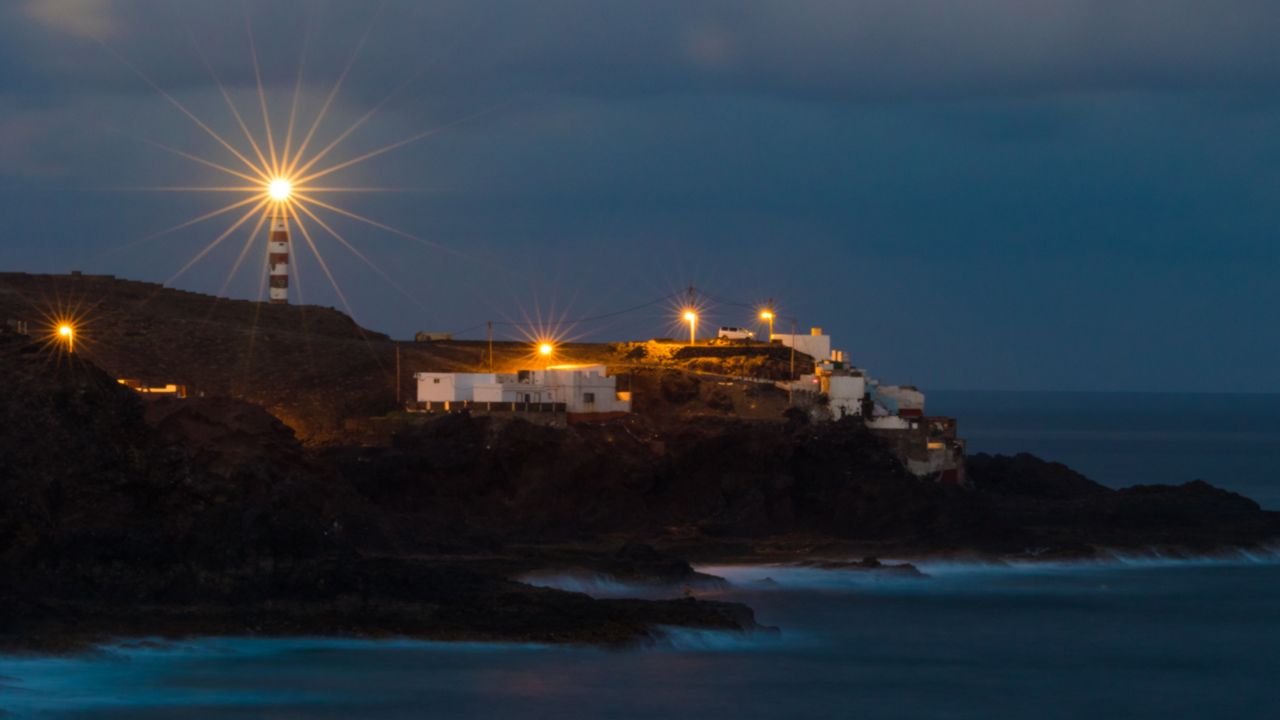
Everything along this marvellous coastline has a reason for being there and its own biography. The primitive maritime lantern came about due to the need to safeguard the growing number of boats sailing around the area, the result of the boom enjoyed by successive industries, including cochineal production, sugar mills, banana plantations, and tomato and potato production. According to historian Francisco Suárez Moreno, in his book entitled ‘The Sea to the West of Gran Canaria’, this constant bustle turned the port of Sardina del Norte, near to the developing towns of Gáldar and Guía, into a key location as a transit site for the coming and going of vessels.
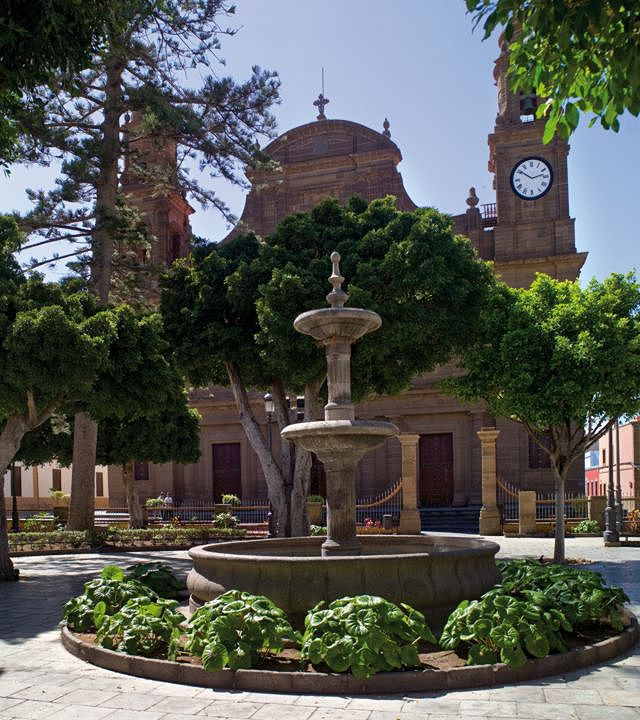
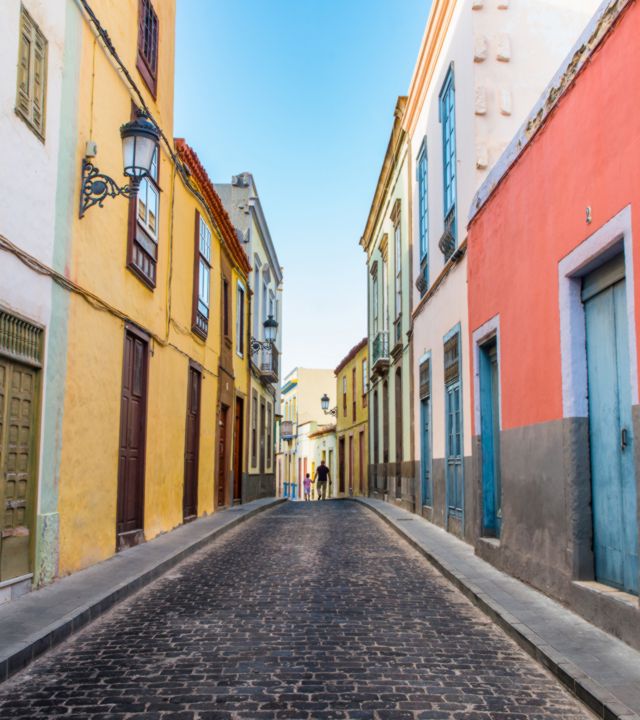
Years before the lighthouse’s construction, the Town Hall in Gáldar constituted its so called Intelligent Marina Commission so they could analyse the municipality’s coastline and reach conclusions regarding “the most suitable site for locating a lighthouse which is to be donated to this town”, according the official minutes of the time. The designated naval officers responded to the names of Juan, Cristóbal and José. They were the three patrons for the lighthouse, and it was they who advised on the spot to build the structure that would light up the surrounding seas.
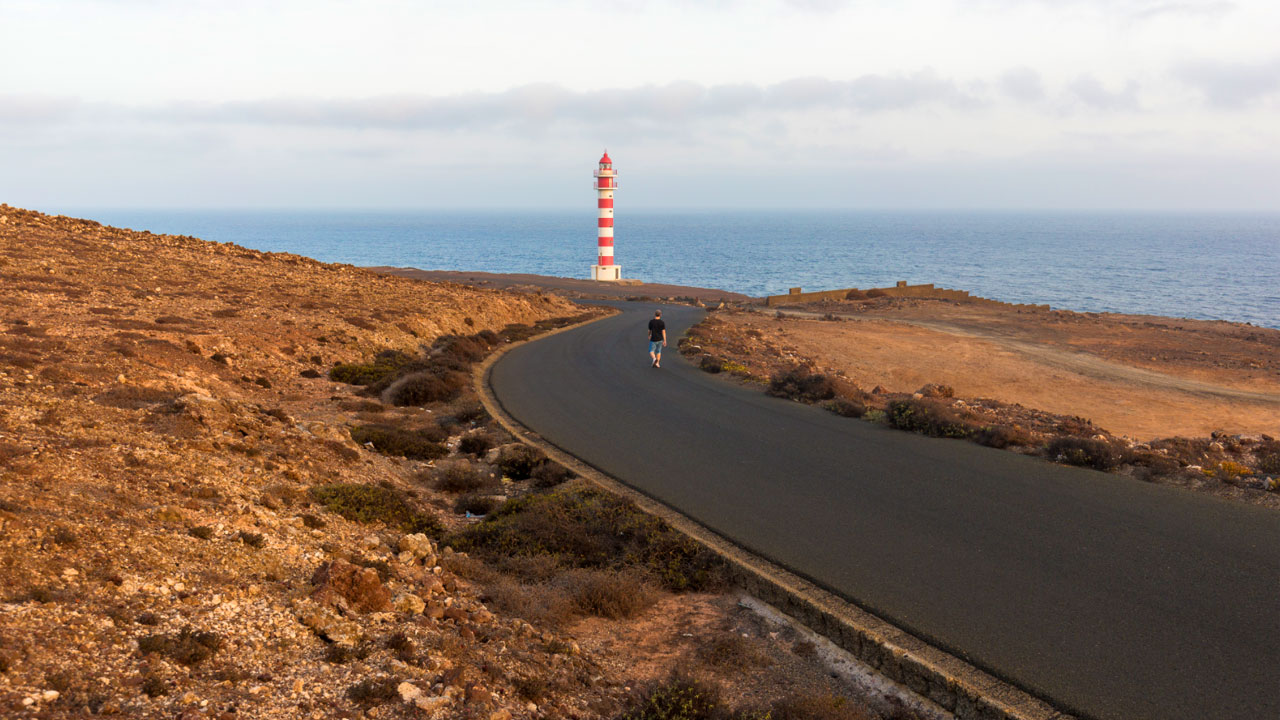
Indeed, the spot chosen and the lighthouse seemed destined to coincide. The presence of a beam of light on the little plateau that juts out over the edge of the steep cliffs that plunge down to the sea below creates an environment that makes us feel we have reached the end of the world, or maybe the beginning. The coastline literally continues talking in a growling voice that sounds particularly deep. Here the sea is like a tenor who is taking on an unending musical score.
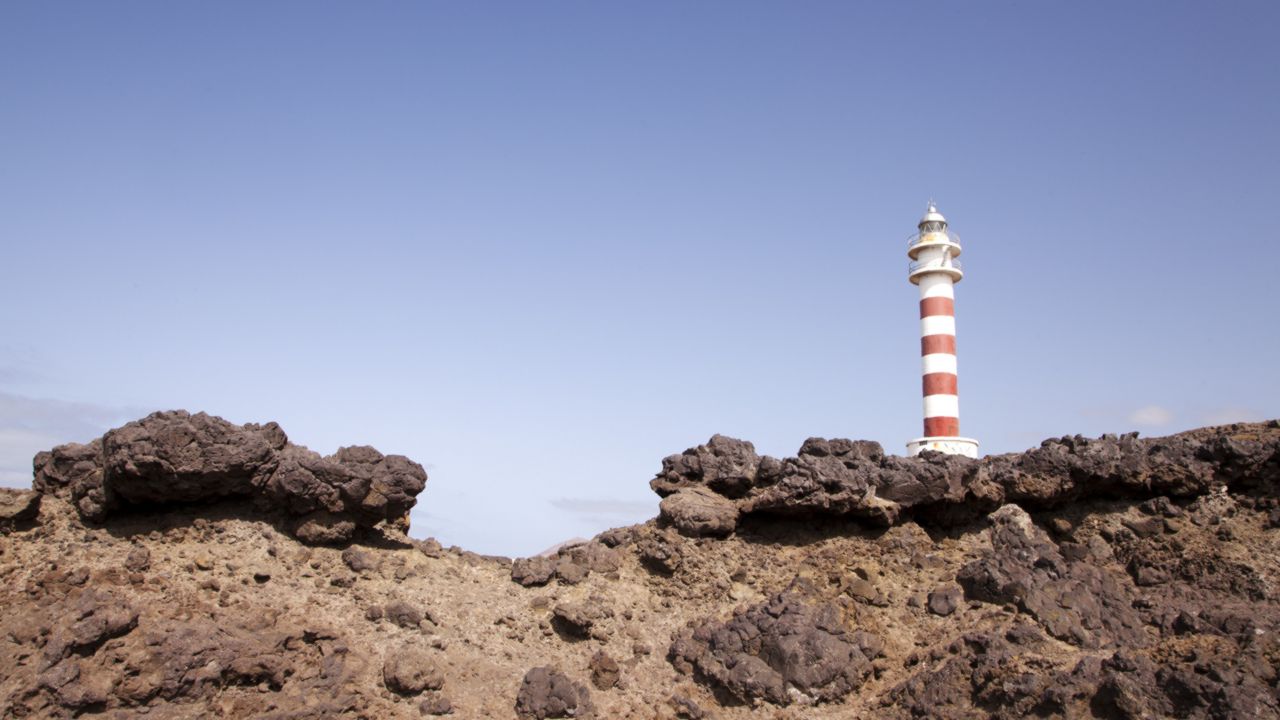
At the join between the land and the great blue sheet that spreads out all around, the ocean’s impulse has created a string of still water pools, a blend of blue, green and ochre mirrors, where peace and quiet contrast starkly with the nearby roaring ocean. The scene is completed with a series of headlands that have been rounded off due to the insistent efforts of winds and tides. Meanwhile, large red crabs observe everything from the edge of these natural pools, or from down below where the sea hits the rocks. In the blink of an eye they disappear at this invisible but precisely defined safety boundary.
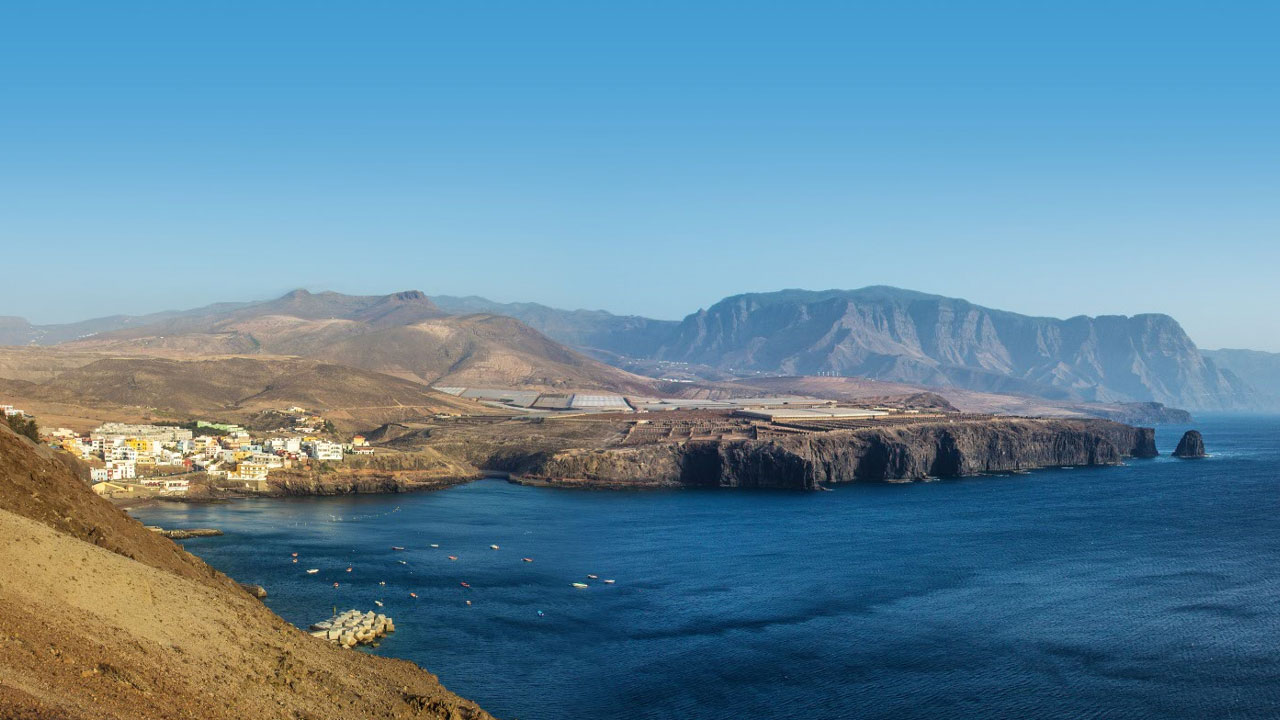
Out to sea, a sailing boat marks out a subtle white speck on this still blue canvass. The crew on board are carried along by the wind and can feel what it is like to be in the salty hands of the Atlantic. Back on land a fisherman, almost camourflaged by the landscape, launches his fishing rod into the waters famous for the abundance and exquisiteness of its rock fish, a famous fact that has known long before any lighthouse shone its beam of light over this rugged piece of coastline.
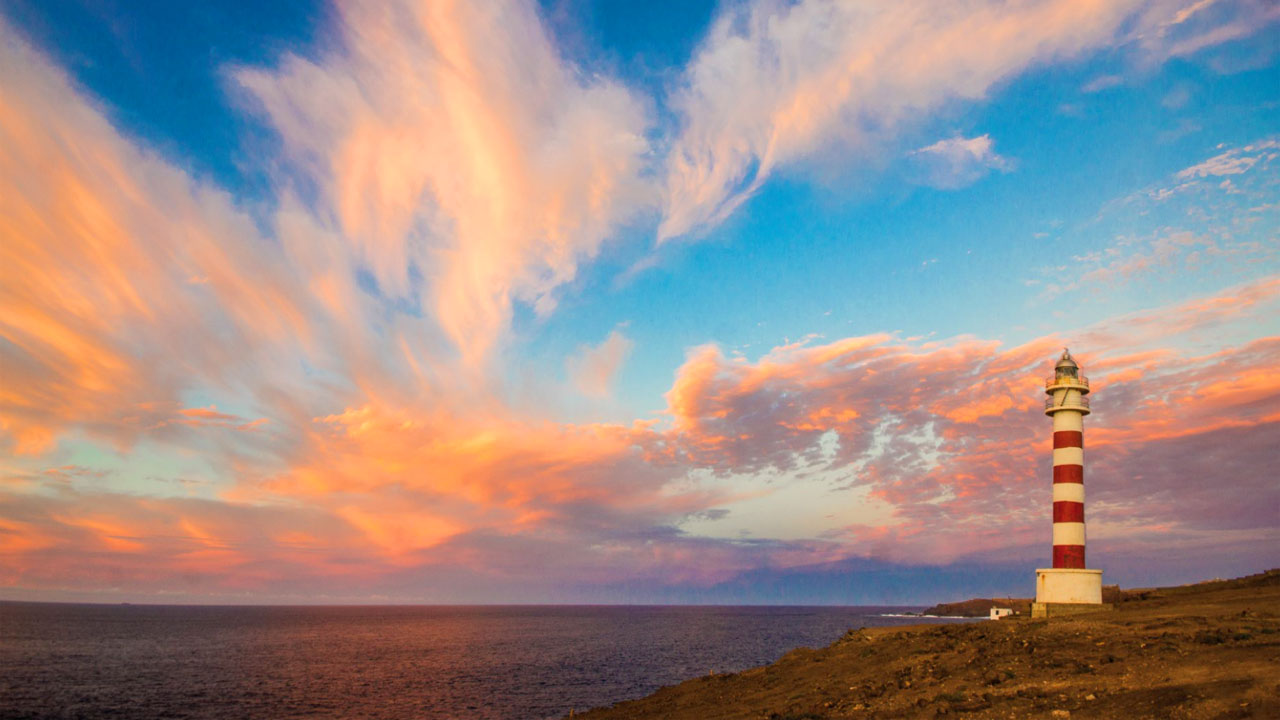
The rest of the landscape is also part of the history which is still being written. On the nearby hillsides we can just make out the banana plantations, immemorial quays on which even ideas and dreams of the northwest of Gran Canaria have embarked and disembarked, along with winding paths that meander down to the ocean, without which nothing of all this could be understood. They all seem to be looking out and caring for eachother, but above all it is the lighthouse that does so, as it maintains its dialogue with the Atlantic.

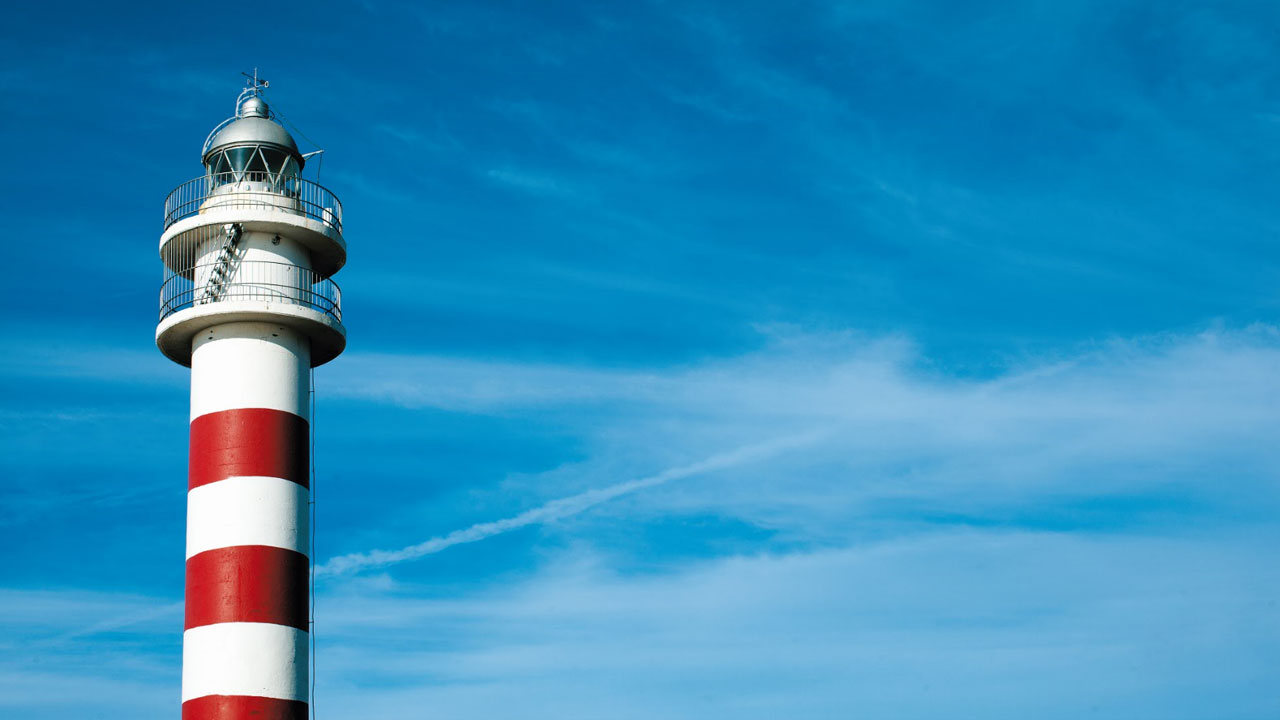
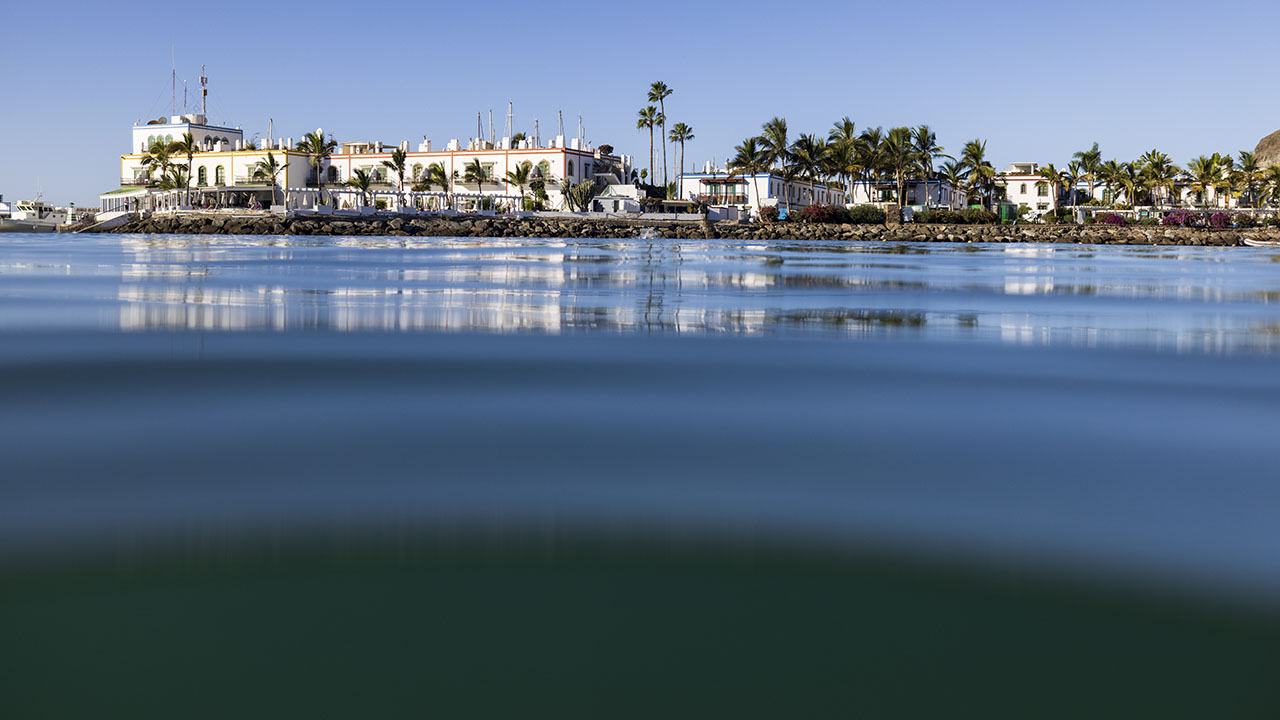
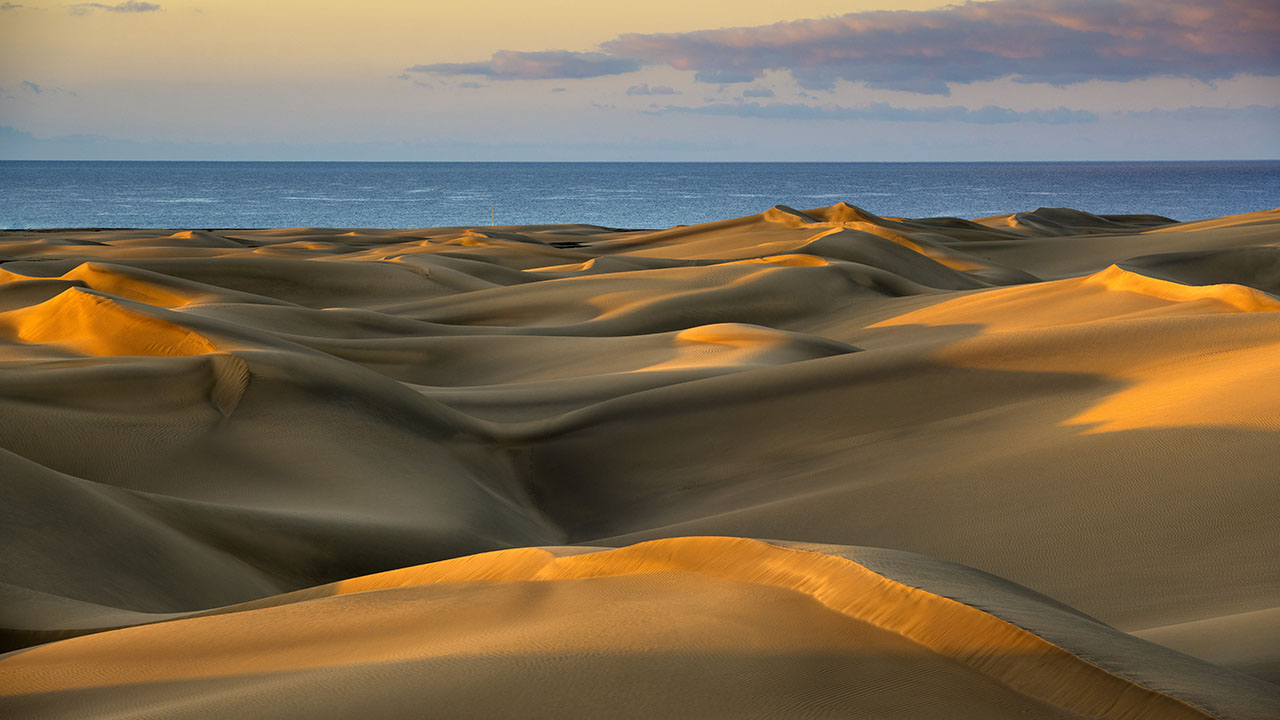
Comments are disabled for this post.